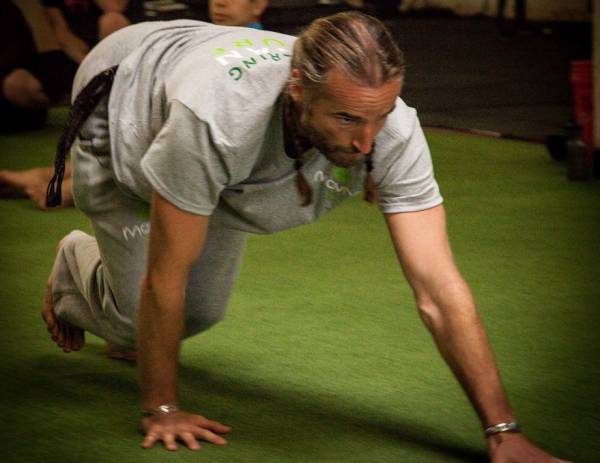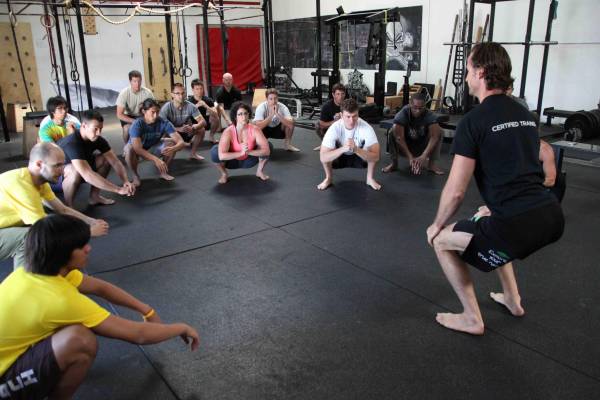I’m going to go out on a limb and guess you’ve dealt with pain. Possibly, you’re stuck with it even now. Pain has a way of hindering our athletic progress and quality of life. Luckily, your body houses its own built-in solution for pain: natural movement.
Thanks to the power of neuroplasticity and the specific adaptation to imposed demand principle, movement provides a powerful stimulus to redefine habitual patterns of pain in the body. It’s particularly helpful in cases of chronic pain because of its ability to restore healthy sensory-motor function.
Ready to move better than ever before and kick pain in the face? It’s time to remember just what that beautiful meat-bag of yours is capable of. Let’s start by clarifying just what pain is in the body.
Sensory-motor amnesia is a vicious cycle that dampens the neural connections between body and brain.
What Your Pain Means
The nature of pain in the body means that you’re both the subject and object in your own pain conversation. Pain is an output, not an input.3 You manufacture your own pain based on exposing your body to conditions the nervous system perceives as dangerous. It’s wired to keep you safe, after all.
“Unlike barbells, machines, and the typical gym bro, you’re unique in that you are a self-aware, self-regulating organism.”
More often than not, pain is your body shouting at you when you’ve ignored or misinterpreted its communication thus far. Pre-pain signals range from excess tension and soreness to fatigue and sloppy form. When you ignore these signals, the body has to up the ante to keep itself safe. That’s pain.
Want to move free of pain? Start listening to those cues. The language of the body is that of sensory-motor feedback. But when we’re in pain, we’re stuck in a pattern known as sensory-motor amnesia. To get out of pain, we have to change our inputs and relearn patterns of movement and release.
History of SMA
Sensory-motor amnesia (SMA) is a concept that was developed by the somatic educator Thomas Hanna. SMA leads to a vicious cycle of painful movement in the body by dampening the neural connections between body and brain. This reduced awareness leads to pain and disuse, which further reinforces the cycle.2
More simply: we can grease the groove of strength, or we can grease the groove of pain. It all comes down to how we use the body.
“The strength of the MovNat approach, in particular, comes from its emphasis on patterns, not pieces.”
As a human, you’re a pretty interesting piece of equipment. Unlike barbells, machines, and the typical gym bro, you’re unique in that you are a self-aware, self-regulating organism. Far more than a collection of parts.1 So, why wouldn’t you train with this in mind? For true function, we need to shed the duality of body and mind. For best results and wellness, you just can’t separate the mental and physical aspects of training.
The setup of the nervous system reflects this. In the spinal cord, we have two branches of nerves, one controlling sensory feedback and another controlling motor feedback. These two processes go hand in hand. Sensation informs movement, and movement informs sensation.
We can use this two-way road to our advantage through a natural movement practice. The strength of the MovNat approach, in particular, comes from its emphasis on patterns, not pieces. When you train with body systems in mind, you rewire your movement for the better, and set yourself up to kick pain in the face.

MovNat founder Erwan LeCorre demonstrates a crawling exercise.
MovNat as Restoration and Release
Let’s experiment with our powers of perception. A common beginner’s MovNat drill is an exploration of selective tension. This means muscular involvement only when and where you need it. Rather than chronically holding, we take the brakes off our neuromuscular system for improved function, efficiency, and control.
Selective Tension Drill:
- Grab a partner.
- Stand tall and show us your guns, flexing one arm toward you and allowing the other to remain loose and unengaged.
- Your partner will try to move your arms around. He or she should be able to move the free arm and not budge the tensed one.
- Explore on both sides of the body and be mindful of differences left and right.
Once you get a sense of how to maintain selective tension using your partner’s tactile cues, it’s time to take this awareness into your movement practice. Simply pick a movement that causes pain or excess tension – the squat is a common one – and get moving.
While doing the squat, notice your quality of movement. Practice listening to those sensory cues. Some common cues you may “hear” include:
- Places in the movement where your body feels painful or tense
- Areas where your motor control grows sketchy
- Places where rely on momentum to power through the movement
These are surefire symptoms of SMA, of having forgotten how to move in your own body.
Now it’s time to bring some somatic magic into play. Explore variations in your movement to create a wide variety of neuromuscular feedback.4 Try these:
- Let the squat grow and shrink in size and scale.
- Try to make the squat fluid and easy.
- Then try to make it bound and tense.
- Make the squat sudden and rushed, then sustained and lazy.
Providing a range of sensory-motor feedback is literal brain candy and works wonders to bring you out of painful patterns of dysfunction.

Working on squats during a MovNat workshop.
Taking It Further
You can continue this process of active reeducation in myriad movements. For the most transferability, explore basic positions such as sitting, kneeling, quadruped, prone, and supine. (Check out Perry Nickelston’s article for a fantastic progression.)
As you move from position to position, begin to tune in to what the body is telling you. Again aim for controlled movement, free of momentum. Pay particular attention to areas of pain and tension, moving up to and around them without dipping into pain itself.
Now you’re probably wondering about sets and reps, but it’s critical to approach this process with a different mindset. We developed our original movement potential as infants and toddlers through curiosity, trial and error, and a healthy dose of play. No end-gaining here! When you carry this attitude to your recovery of pain-free patterns, your body will quickly wake up to its inherent potential for natural movement.
More Like This:
- Move Your Body, Move Your Brain: Training for Neuroplasticity
- How to Use Manual Therapy to Restore Essential Gait Mechanics
- Beyond Crawling: Cross Patterning for Athletes
- New on Breaking Muscle Today
References:
1. Schmalzl, Laura, Mardi Crane-Godreau, and Peter Payne. “Movement-based Embodied Contemplative Practices: Definitions and Paradigms.” Frontiers in Human Neuroscience 205 doi: 10.3389/fnhum, 2014.
2. Nijs, Jo et al. “Nociception affects motor output: a review on sensory-motor interaction with focus on clinical implications.” The Clinical Journal of Pain 28 (2012) doi: 10.1097/AJP.0b013e318225daf3
3. Melzack, Ronald. “Pain and the Neuromatrix in the Brain.” Journal of Dental Education 65, 2001.
4. Tsauo, Jau-Yih. “The effects of sensorimotor training on knee proprioception and function for patients with knee osteoarthritis: a preliminary report.” Clinical Rehabilitation 22 doi: 10.1177/0269215507084597, 2008.
Photo 1 courtesy of Shutterstock.
Photos 2 and 3 courtesy of MovNat.






